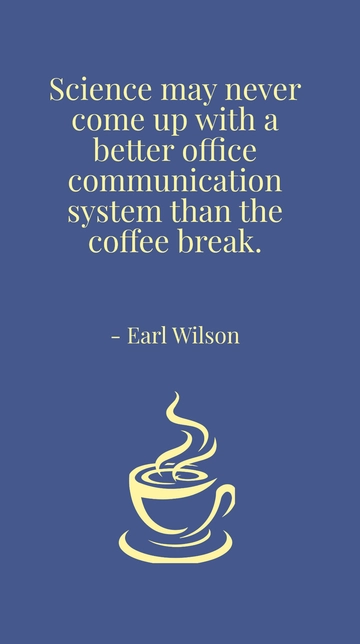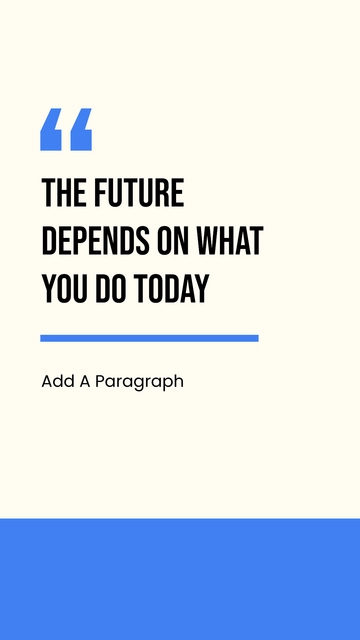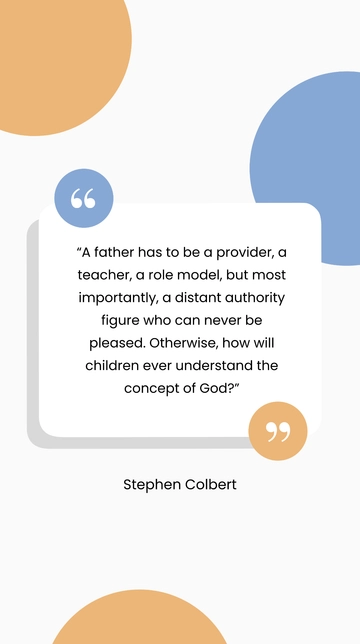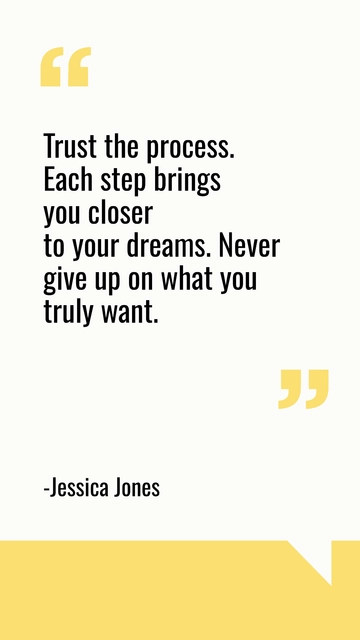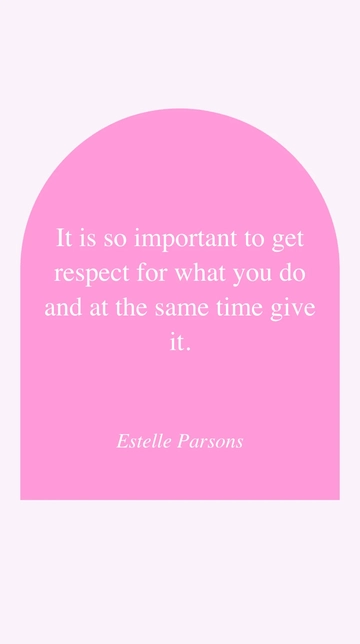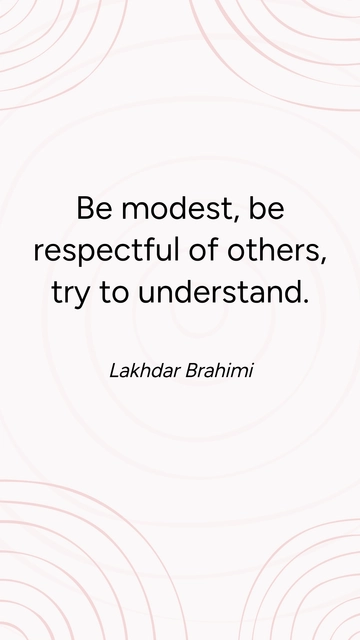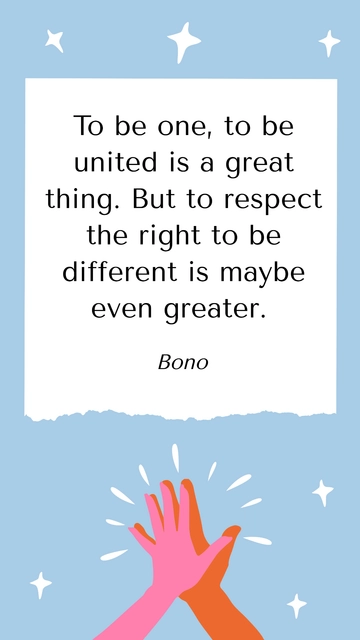Free Sales Training Manual for Quote Preparation

I. Introduction
Welcome to [Your Company Name]’s Sales Training Manual for Quote Preparation. As you embark on your journey as a sales professional within our organization, you'll discover that quote preparation is an integral part of the sales process. The objective of this manual is to serve as a comprehensive guide to navigating the complexities of crafting quotes that are accurate, compelling, and aligned with both our company’s values and customer expectations.
Quote preparation is more than just a clerical task; it's an opportunity to make a lasting impression on prospective clients and set the tone for all future interactions. A well-prepared quote speaks volumes about our company’s professionalism, attention to detail, and commitment to quality service. It also plays a vital role in building trust and credibility, key elements that encourage customers to engage with us further.
In addition to contributing to customer satisfaction, adhering to best practices in quote preparation also helps streamline internal operations. It ensures compliance with legal standards, helps in effective inventory management, and facilitates better communication within sales teams and other departments involved in product delivery and service implementation.
By mastering the art and science of quote preparation, you not only enhance your own skill set but also play an essential role in driving company sales and elevating [Your Company Name]'s market standing. This manual aims to provide you with all the tools and knowledge necessary to excel in this important aspect of your role.
II. Objectives of Quote Preparation
The process of preparing quotes serves multiple purposes that go beyond just listing product specifications or service details. Understanding the core objectives of quote preparation can help you create quotes that resonate with customers and align with [Your Company Name]'s strategic goals. Here are the main objectives and their significance:
Accuracy. The foremost objective is to provide accurate information. A quote with precise details about pricing, product specifications, and delivery timelines minimizes the risk of misunderstandings and disagreements down the line. Accuracy is crucial for establishing trust with the client and paves the way for a smooth transaction process. Meticulous attention to detail can set you apart from competitors and reinforce the client's confidence in choosing [Your Company Name].
Professionalism. A professionally prepared quote reflects positively on [Your Company Name] and reinforces the quality standards we uphold. From the layout and design of the quote to the language and terminology used, every element should convey expertise and reliability. Professionalism in the quote acts as a microcosm of the overall service quality a customer can expect from our organization.
Compliance. Staying compliant with both internal and external regulations is another critical objective. Ensure the quote aligns with [Your Company Name]'s internal pricing and product guidelines, as well as any industry or legal standards. Compliance is not only about following the law but also about maintaining consistency across all customer touchpoints, thereby avoiding reputational risks.
Customer Engagement. Lastly, a quote isn’t just a one-off document; it's a tool for ongoing customer engagement. A well-crafted quote encourages dialogue, be it through questions, clarifications, or negotiations. By setting the stage for further communication, you’re also laying down the foundation for a long-term business relationship. Providing a clear and attractive quote can be the first step toward meaningful customer interactions and eventual sales conversions.
By keeping these objectives in mind, you'll be better equipped to create quotes that serve both the company and the customer efficiently and effectively.
III. Types of Quotes
Understanding the different types of quotes is crucial for tailoring your approach to diverse sales scenarios. Each type of quote serves a unique purpose and is best suited for specific kinds of transactions or customer interactions. Familiarizing yourself with these variations will allow you to select the most appropriate quote type for any given situation, thereby enhancing your effectiveness and adaptability as a sales professional. Below is a detailed table outlining the main types of quotes, their descriptions, and the scenarios in which they are most applicable.
Type | Description | When to Use |
Standard Quote | Predetermined pricing for services and goods | Repeat transactions |
Pro Forma | Estimates based on product measurements and requirements | Custom orders |
Bulk Quote | Special pricing for high-volume orders | Large transactions |
Standard Quote: A Standard Quote is a formal document that outlines predetermined pricing for services or goods. This type of quote is generally used for transactions that occur on a regular basis or where pricing is stable. Utilize this quote for repeat customers who are already familiar with your product or service offerings to expedite the sales process.
Pro Forma Quote: A Pro Forma Quote is an estimate that takes into account various factors such as product measurements, specific requirements, and other variables that might impact the final cost. This quote is ideal for custom orders where the details are unique to each client. The Pro Forma Quote gives an approximate price, allowing for further negotiation and clarification between the company and the client.
Bulk Quote: A Bulk Quote provides special pricing for high-volume orders. This type of quote is designed to incentivize large purchases by offering discounts or other favorable terms. Use this quote for transactions involving a substantial volume of products or services, often for B2B clients or wholesalers who intend to distribute the products further.
By understanding the nuances of each quote type, you can ensure that you're using the right tool for the right job, thereby boosting your efficiency and increasing the likelihood of successful sales outcomes.
IV. Quote Preparation Process
The quote preparation process is a multi-step journey that demands meticulous attention to detail and collaboration among various departments within the organization. It's imperative to understand each phase to create a quote that not only wins over the client but also aligns with [Your Company Name]'s internal guidelines and external regulations. Below is a structured table that outlines the main steps involved in the quote preparation process, along with additional details for each step to guide you through it effectively.
Step | Sub-Steps | Additional Details |
Step 1: Gather Information | Client Needs | Engage with the client to understand their specific needs, requirements, and expectations. This may involve client meetings, emails, or calls. |
Pricing | Consult the most recent product or service database to obtain updated pricing information. Ensure that this data is the most current to maintain accuracy in the quote. | |
Step 2: Internal Review | Approval | For any special pricing or terms, seek the necessary approvals from department heads or management. Document all approvals for future reference. |
Compliance | Review the quote for adherence to internal guidelines and any applicable external laws or industry regulations. Include any necessary disclaimers or legal language. | |
Step 3: Prepare the Quote | Formatting | Use our standardized quote template to maintain consistency and professionalism. This also ensures compliance with branding guidelines. |
Review | Before finalizing, double-check all elements of the quote, including product details, pricing, and terms. Consider having a colleague review it as well for an additional layer of scrutiny. |
By systematically following these steps, you'll be able to produce a high-quality, accurate, and compelling quote that stands a good chance of converting prospects into long-term clients.
V. Quote Format
The format of the quote plays a pivotal role in how your proposal is received by the client. An organized, clear, and consistent format not only conveys professionalism but also makes it easier for the client to understand the details, thus improving the likelihood of securing the business. Below is a comprehensive table that delineates the essential elements to include in the quote's header, body, and footer, along with some additional details that can add value to your quote.
Section | Elements | Additional Details |
Header | Company’s Name | Make sure to use the official name and logo for your company to establish brand identity. |
Contact Details | Include the physical address, phone number, and email to facilitate easy communication between both parties. | |
Quote Prepared By | Mention the name and designation of the person who prepared the quote for accountability and direct contact. | |
Date of Issue | Indicate the date when the quote was created to set a time frame for acceptance. | |
Body | Product/Service Description | Clearly describe the product or service being offered. This could include specifications, model numbers, or unique features. |
Quantity | Specify the number of units required for each product or service, particularly if volume discounts apply. | |
Price per Unit | Clearly indicate the price for each unit of product or service to prevent any misunderstandings. | |
Total Price | Calculate the total price for all items/services, accounting for any applicable taxes or fees. | |
Footer | Terms and Conditions | Lay out the terms and conditions under which the quote is valid, including payment terms and delivery schedules. |
Expiry Date | Indicate a date by which the quote must be accepted, after which the offer may no longer be valid. | |
Signature | Leave space for both the company representative's and client's signatures to confirm agreement. |
Following this format ensures that your quote meets the expectations of both [Your Company Name] and potential clients. This structure provides clarity and completeness, which can go a long way in building trust and securing a successful sales transaction.
VI. Key Elements to Include
In addition to the standard elements in the quote, there are other key aspects that should be highlighted for complete transparency and to provide the client with all the information needed to make an informed decision. Below are these critical elements elaborated upon:
Discounts: When offering discounts, it's crucial to specify the exact percentage or dollar amount discounted and on which items or services these discounts are applicable. Make clear whether the discount is a limited-time offer and if it's conditional upon certain factors, such as a minimum purchase quantity or early payment.
Payment Terms: Specify what methods of payment are accepted, such as credit cards, bank transfers, or checks. Outline any payment milestones, especially for larger projects that are paid in multiple installments. If there are any incentives for early payment or penalties for late payment, these should also be clearly stated.
Tax Information: Detail the applicable tax rates on the goods or services offered, as well as the total amount of tax that will be charged. If different items in the quote have different tax rates, specify these clearly. Also, indicate if tax is already included in the price or will be added later.
Exclusions: Clearly list what is not included in the quote to avoid any misunderstandings or hidden costs. This could be anything from delivery charges to installation fees to after-sales service. Transparency about exclusions can prevent disagreements and loss of trust later in the sales process.
Including these elements in your quote ensures that you provide a comprehensive, transparent, and trustworthy document. This level of detail not only instills confidence in the client but also safeguards [Your Company Name] by minimizing the risk of misunderstandings or disputes.
VII. Common Mistakes to Avoid
The accuracy and completeness of a quote can make or break a deal. Therefore, it's imperative to avoid common mistakes that can jeopardize a potential sale or create misunderstandings between [Your Company Name] and the client. Below are some of the frequent pitfalls and how to avoid them:
Not Double-Checking for Errors: Errors in a quote, be they typographical or computational, can tarnish the company's reputation and may even lead to legal issues. Always double-check all the figures, terms, and spelling before sending the quote to the client. If possible, have a second set of eyes review the document to catch any mistakes you might have missed.
Neglecting to Specify the Quote's Expiration Date: Not including an expiration date can lead to situations where a client comes back much later, expecting to get the same prices or terms that are no longer valid or relevant. Always specify an expiration date to set a timeframe for the client to act and to protect the company from future price or term variations.
Overlooking Tax Considerations: Forgetting to include or improperly calculating tax can result in an inaccurate total price, which may not only confuse the client but also expose the company to potential legal liabilities. Always ensure you have the most current tax rates and include all applicable taxes in the quote. Additionally, specify whether the quoted prices include tax or if tax will be added later to prevent any misunderstandings.
Avoiding these common mistakes will improve the quality and reliability of your quotes, leading to increased customer trust and satisfaction. It will also protect [Your Company Name] from unnecessary complications and legal risks.
VIII. Guidelines for Follow-up
Once the quote is sent, the sales process is far from over. A proactive follow-up strategy can be a decisive factor in clinching the deal. Below are essential guidelines for effective follow-up after sending a quote:
Follow up within 48 hours: Timeliness is key in showing the client that you value their business and are attentive to their needs. Waiting too long to follow up could give competitors an opportunity to step in. Following up within a specified time-frame, such as 48 hours, keeps the momentum going and demonstrates your eagerness to move forward.
Use the preferred communication channel indicated by the client: Whether it's email, phone, or another method, using the client's preferred communication channel shows attentiveness and respect for their preferences. This not only streamlines the communication process but also increases the chances of a timely and positive response.
Always ask for feedback, irrespective of whether the quote is accepted or not: Understanding why a quote was or wasn't accepted can provide valuable insights for future quoting processes. Asking for feedback can help you identify areas for improvement, whether it's in the accuracy of the quote, the competitiveness of the pricing, or the clarity of the terms and conditions. Additionally, it keeps the lines of communication open for potential future business opportunities.
Adhering to these guidelines can significantly increase the effectiveness of your follow-up process, thereby improving the chances of quote acceptance and building stronger client relationships.
IX. Conclusion
Quote preparation is an essential part of the sales process at [Your Company Name]. By adhering to the guidelines outlined in this manual, you contribute to the organization’s professional image and credibility in the marketplace. Remember, an accurate and well-prepared quote is often the first step to a successful sale. Keep this manual as a handy reference for all your quote preparation needs.
- 100% Customizable, free editor
- Access 1 Million+ Templates, photo’s & graphics
- Download or share as a template
- Click and replace photos, graphics, text, backgrounds
- Resize, crop, AI write & more
- Access advanced editor
Discover the Sales Training Manual for Quote Preparation Template at Template.net. Designed for sales professionals, this template is editable and customizable, providing a comprehensive guide for preparing accurate quotes. Crafted to enhance sales training programs, it's fully editable in our AI Editor tool. Ensure your team is equipped with the knowledge to succeed with Template.net's expert resources.
You may also like
- Inspirational Quotes
- Motivational Quotes
- Inspirational For Work Quotes
- Inspirational For Women Quotes
- Funny Inspirational Quotes
- Inspirational About Life Quotes
- Life Quotes
- Inspirational For Students Quotes
- Inspirational For Kids Quotes
- Inspirational For Men Quotes
- Positive Quotes
- Love Quotes
- Funny Quotes
- Famous Quotes
- Mothers Day Quote
- Short Quotes
- Good Morning Quotes
- Valentines Day Quotes
- Family Quotes
- Christmas Quotes
- Encouraging Quotes
- Friendship Quotes
- Kindness Quotes
- Graduation Quotes
- Leadership Quotes
- Motivational For Work Quotes
- Bible Quotes
- Maya Angelou Quotes
- Marcus Aurelius Quotes
- Sad Quotes
- Birthday Quotes
- Success Quotes
- Self Love Quotes
- Travel Quotes
- Grief Quotes
- Fathers Day Quotes
- Relationship Quotes
- Depression Quotes
- Anniversary Quotes
- Friday Quotes
- New Year Quotes
- Monday Quotes
- Teamwork Quotes
- Movie Quotes
- Black History Month Quotes
- Shakespeare Quotes
- Mark Twain Quotes
- Memorial Day Quotes
- Thanksgiving Quotes
- Education Quotes
- Martin Luther King Jr Quotes
- Easter Quotes
- Albert Einstein Quotes
- Mom Quotes
- Music Quotes
- Work Quotes
- Encouragement Quotes
- Teacher Quotes
- Christian Quotes
- Daughter Quotes
- Winston Churchill Quotes
- Peace Quotes
- Spring Quotes
- Nature Quotes
- Strength Quotes
- Fall Quotes
- Confucius Quotes
- Dog Quotes
- Thank You Quotes
- Hard Work Quotes
- Summer Quotes
- Hope Quotes
- James Baldwin Quotes
- Healing Quotes
- Oscar Wilde Quotes
- Appreciation Quotes
- 4Th Of July Quotes
- Adventure Quotes
- Anxiety Quotes
- Architecture Quotes
- Awareness Quotes
- Beach Quotes
- Beauty Quotes
- Blessed Quotes
- Breakup Quotes
- Canada Quotes
- Children Quotes
- Chinese Quotes
- Coffee Quotes
- Columbus Quotes
- Compliment Quotes
- Confidence Quotes
- Dussehra Quotes
- Faith Quotes
- Fashion Quotes
- Festival Quotes
- Fitness Quotes
- Forgiveness Quotes
- Friendship Day Quotes
- Good Friday Quotes
- Grandparents Quotes
- Gratitude Quotes
- Halloween Quotes
- Happiness Quotes
- Holi Quote
- Holiday Quotes
- Human Rights Quotes
- I Miss You Quotes
- Independence Day Quotes
- India Republic Day Quotes
- Inspiration Quotes
- Janmashtami Quote
- Labor Day Quote
- Language Quotes
- Letting Go Quotes
- Lifestyle Quotes
- Loyalty Quotes
- Massage Quotes
- May Day Quotes
- Milad Un Nabi Quotes
- Moving On Quotes
- Muharram Quotes
- Pongal Quotes
- Prayer Quotes
- Pride Month Quotes
- Raksha Bandhan Quote
- Ramadan Quotes
- Remembrance Quotes
- Respect Quotes
- Retirement Quotes
- Singles Quotes
- Sisters Day Quotes
- Small Business Quotes
- Sports Quotes
- Startup Quotes
- Trust Quotes
- Ugadi Quote
- Vacation Quotes
- Winter Quotes
- Women Quotes
- Yoga Quotes
